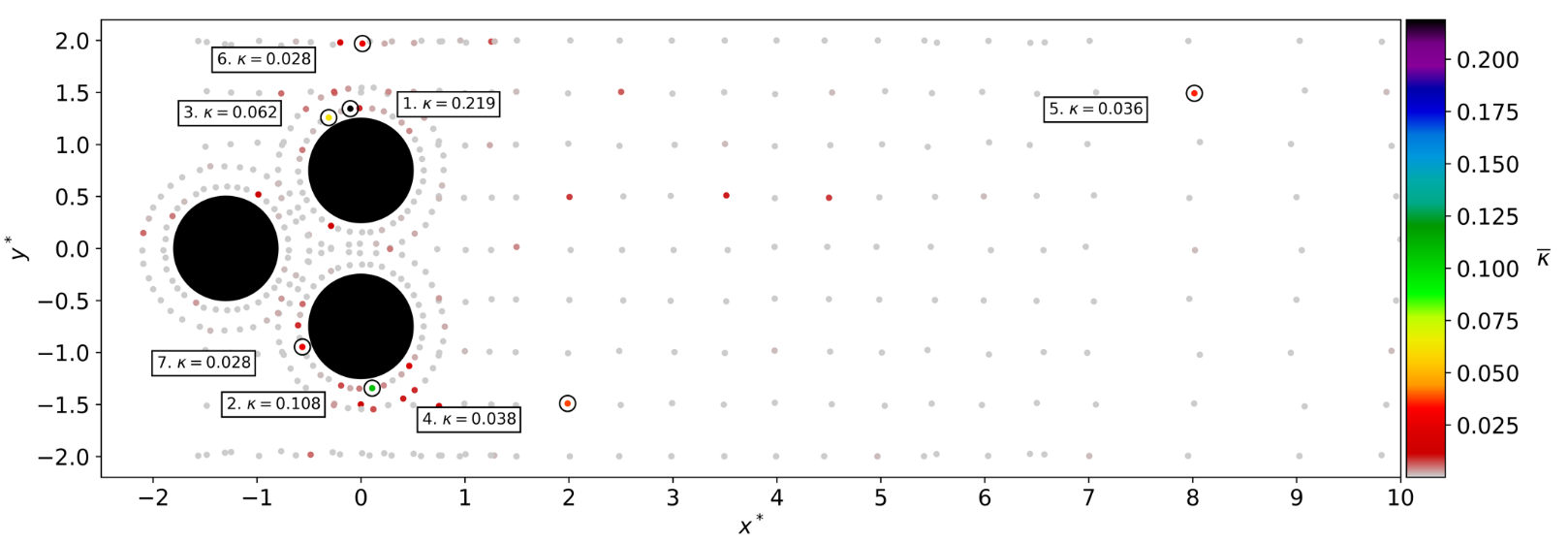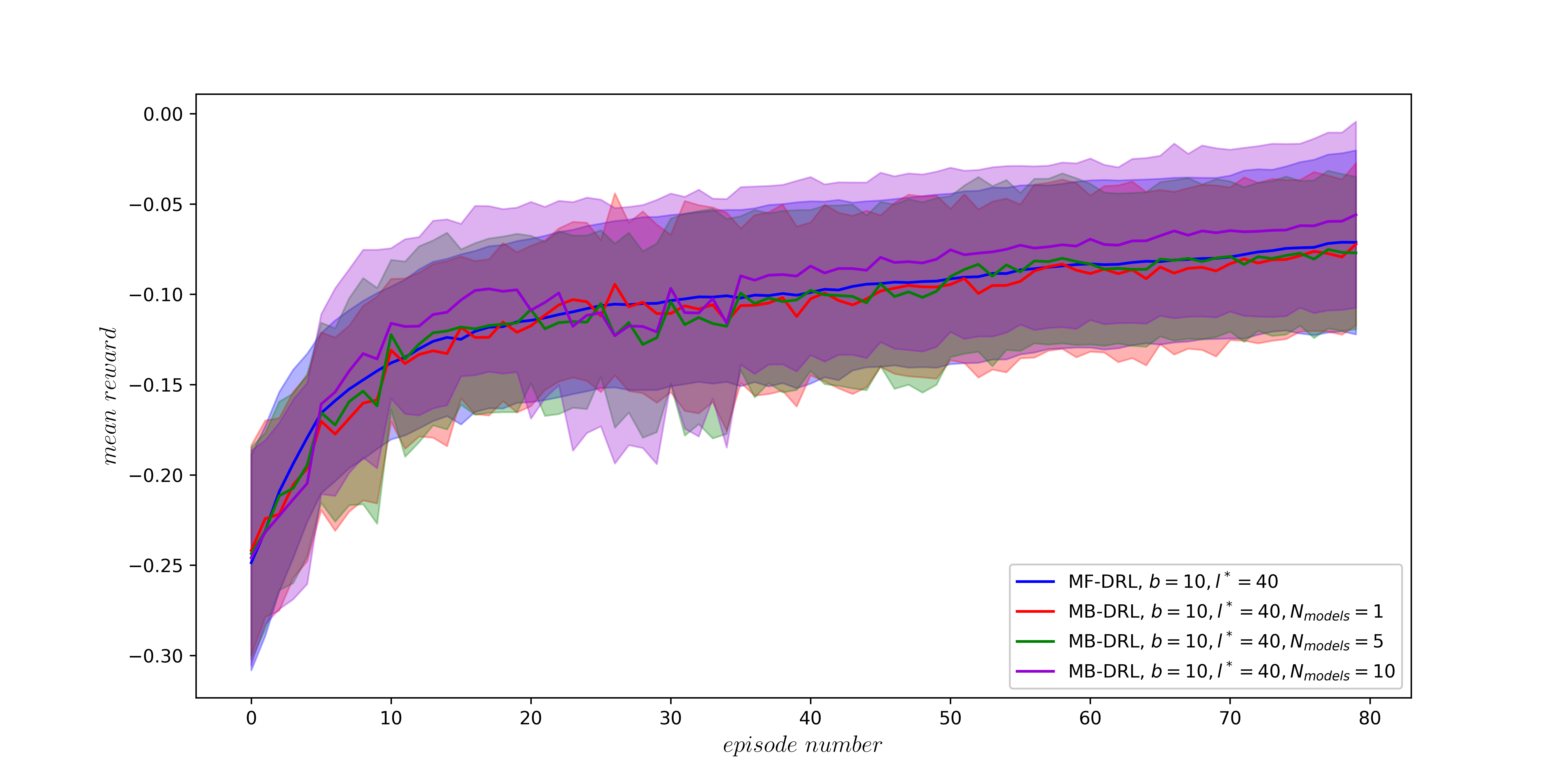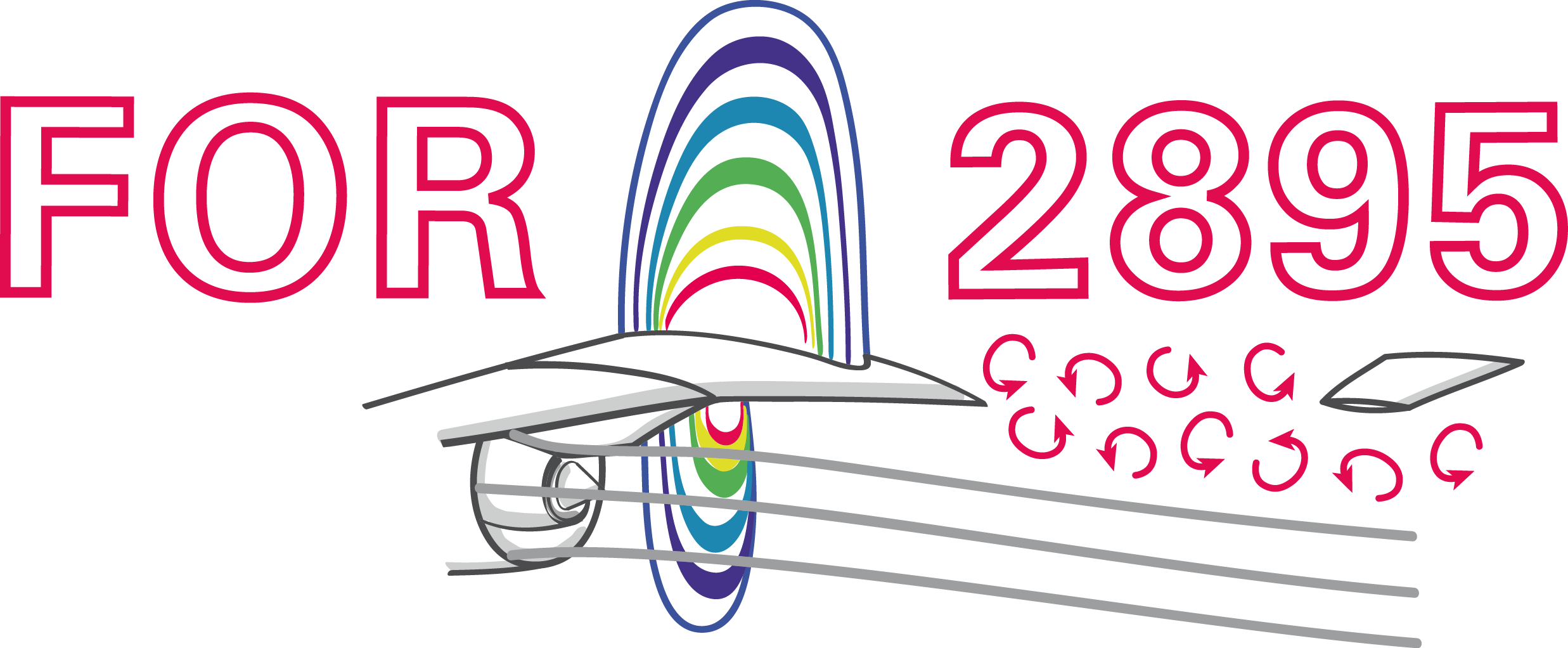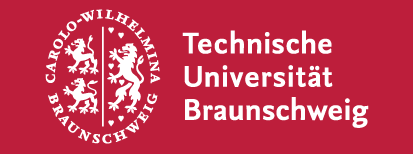Deep reinforcement learning for flow control
Andre Weiner, Tom Krogmann, Janis Geise
TU Braunschweig, Institute of Fluid
Mechanics
Outline
- Closed-loop active flow control
- Reinforcement learning basics
- A close look at PPO
- Optimal sensor placement
- Accelerated learning with ROMs
Closed-loop active flow control
Goals of flow control:
- drag reduction
- load reduction
- process intensification
- noise reduction
- ...
Categories of flow control:
- passive: modification of geometry, topology, fluid, ...
- active: flow actuation through moving parts, blowing/suction, heating/cooling, ...
Active flow control can be more effective but requires energy.
Categories of active flow control:
- open-loop: actuation prescript; constant or periodic motion, blowing, heating, ...
- closed-loop: actuation based on sensor input
Closed-loop flow control can be more effective but defining the control law is extremely challenging.
Closed-loop flow control with variable Reynolds number; source: F. Gabriel 2021.
How to find the control law?
- careful manual design
- adjoint optimization
- machine learning control (MLC)
- (deep) reinforcement learning (DRL)
Favorable attributes of DRL:
- sample efficient thanks to NN-based function approximation
- discrete, continuous, or mixed states and actions
- control law is learnt from scratch
- can deal with uncertainty
- high degree of automation possible
Why CFD-based closed-loop control via DRL?
- save virtual environment
- prior optimization, e.g., sensor placement
Main challenge: CFD environments are expensive!
Reinforcement learning basics
Create an intelligent agent that learns to map states to actions such that cumulative rewards are maximized.

Flow past a cylinder benchmark.
Experience tuple:
$$ \left\{ S_t, A_t, R_{t+1}, S_{t+1}\right\} $$
Trajectory:
$ \left\{S_0, A_0, R_1, S_1\right\} $
$ \left\{S_1, A_1, R_2, S_3\right\} $
$\left\{ ...\right\} $
$r=3-(c_d + 0.1 |c_l|)$
Long-term consequences:
$$ G_t = \sum\limits_{l=0}^{N_t-t} \gamma^l R_{t+l} $$
- $t$ - control time step
- $G_t$ - discounted return
- $\gamma$ - discount factor, typically $\gamma=0.99$
- $N_t$ - number of control steps
DRL learning objective:
maximize expected cumulative rewards.
A close look at proximal policy optimization (PPO)
Why PPO?
- continuous and discrete actions spaces
- relatively simple implementation
- restricted (robust) policy updates
- sample efficient
- ...
Refer to R. Paris et al. 2021 and the references therein for similar works employing PPO.

Proximal policy optimization (PPO) workflow (GAE - generalized advantage estimate).

Policy network predicts probability density function(s) for action(s).
Comparison of Gauss and Beta distribution.
learning what to expect in a given state - value function loss
$$ L_V = \frac{1}{N_\tau N_t} \sum\limits_{\tau = 1}^{N_\tau}\sum\limits_{t = 1}^{N_t} \left( V(s_t^\tau) - G_t^\tau \right)^2 $$
- $\tau$ - trajectory (single simulation)
- $s_t$ - state/observation (pressure)
- $V$ - parametrized value function
- clipping not included
Was the selected action a good one?
$$\delta_t = R_t + \gamma V(s_{t+1}) - V(s_t) $$ $$ A_t^{GAE} = \sum\limits_{l=0}^{N_t-t} (\gamma \lambda)^l \delta_{t+l} $$
- $\delta_t$ - one-step advantage estimate
- $A_t^{GAE}$ - generalized advantage estimate
- $\lambda$ - smoothing parameter
make good actions more likely - policy objective function
$$ J_\pi = \frac{1}{N_\tau N_t} \sum\limits_{\tau = 1}^{N_\tau}\sum\limits_{t = 1}^{N_t} \left( \frac{\pi(a_t|s_t)}{\pi^{old}(a_t|s_t)} A^{GAE,\tau}_t\right) $$
- $\pi$ - current policy
- $\pi^{old}$ - old policy (previous episode)
- clipping and entropy not included
- $J_\pi$ is maximized
Optimal sensor placement
Tom Krogmann, Github, 10.5281/zenodo.7636959

Fluidic pinnball setup.

Mean lift $\mu_{c_L}$ over the Reynolds number $Re$.
Challenge with optimal sensor placement and flow control:
actuation changes the dynamical system
Idea: include sensor placement in DRL optimization via attention
Attention: encoder-decoder structure with softmax

Time-averaged attention weights $\bar{\kappa}$.

Results obtained with top 7 sensors (MDI - mean decrease of impurity, modes - QR column pivoting).
Accelerated learning with reduced-order models (ROMs)
Janis Geise, Github, 10.5281/zenodo.7642927
Idea: replace CFD with ROM in regular intervals
- model ensemble
- ~30 time delays
- fully-connected, feed-forward
Challenge: automated creation of accurate models.



More time savings possible!
THE END
Thank you for you attention!

